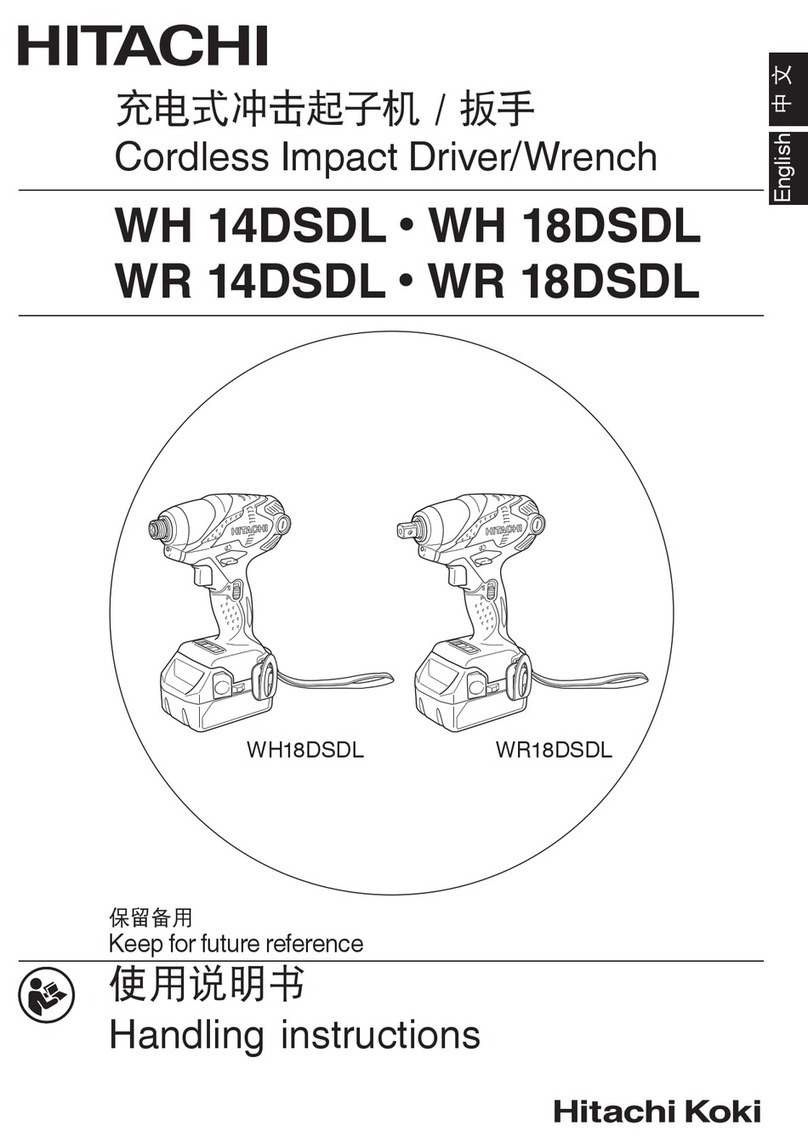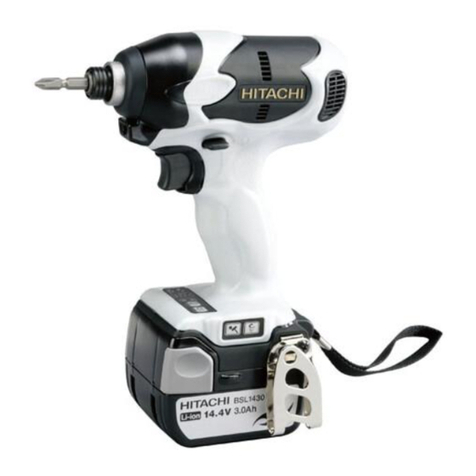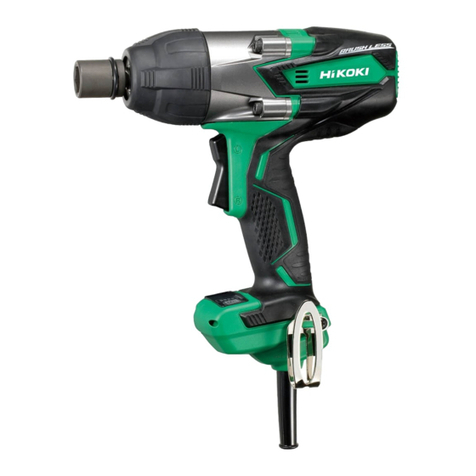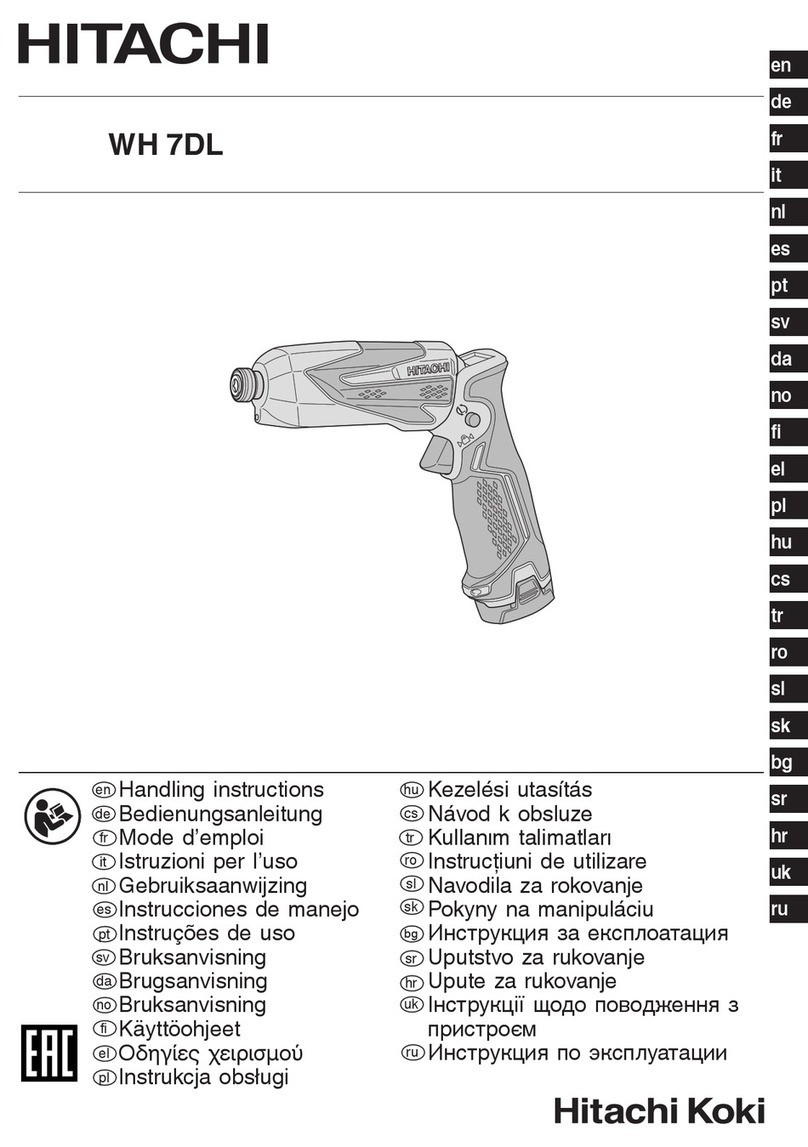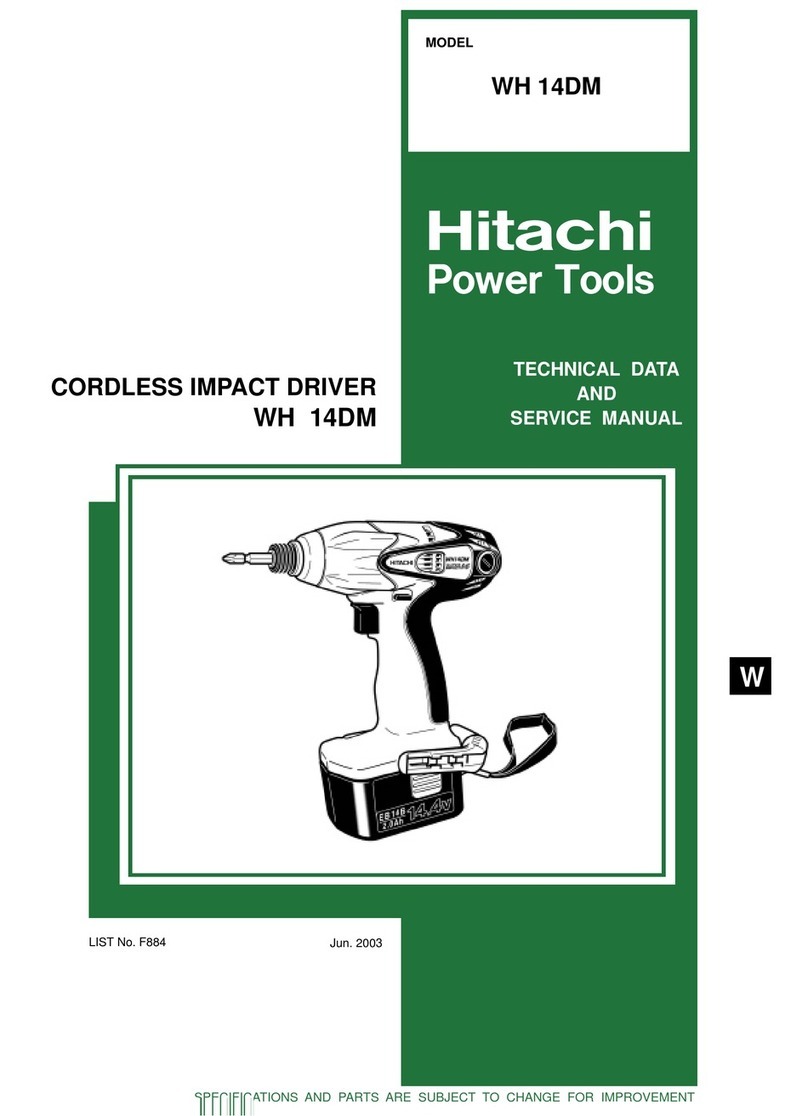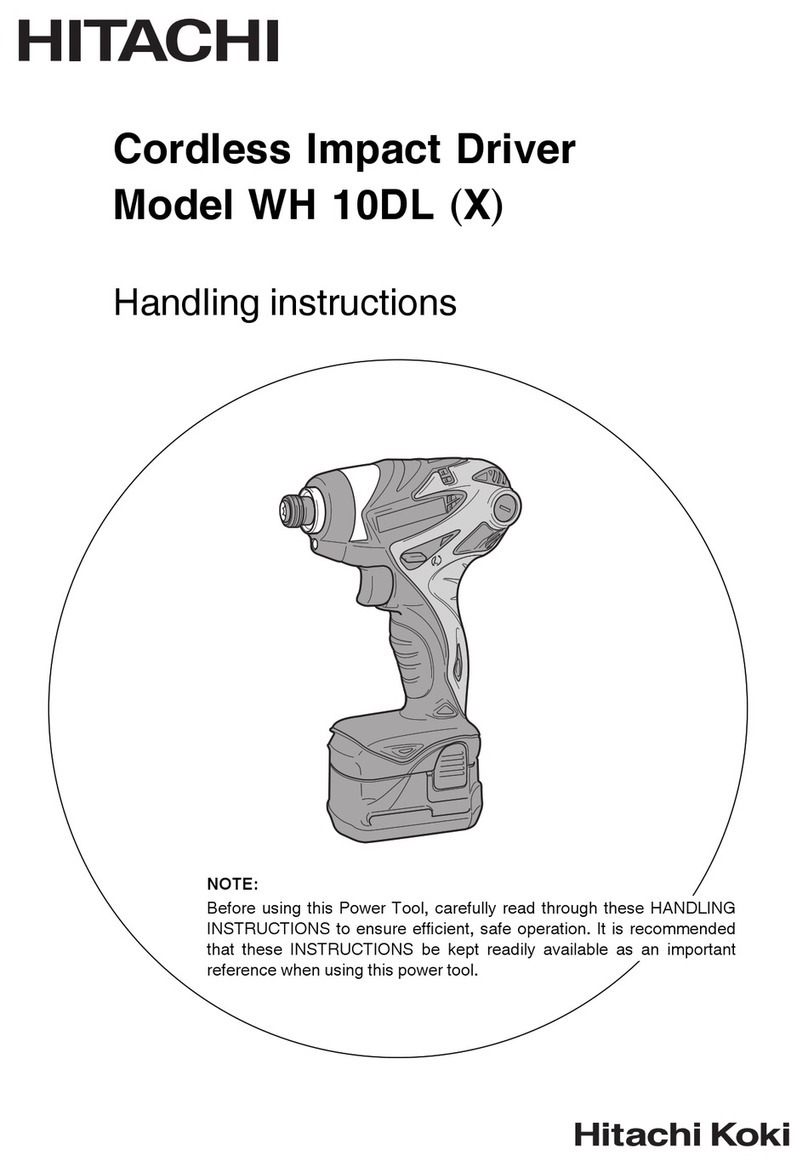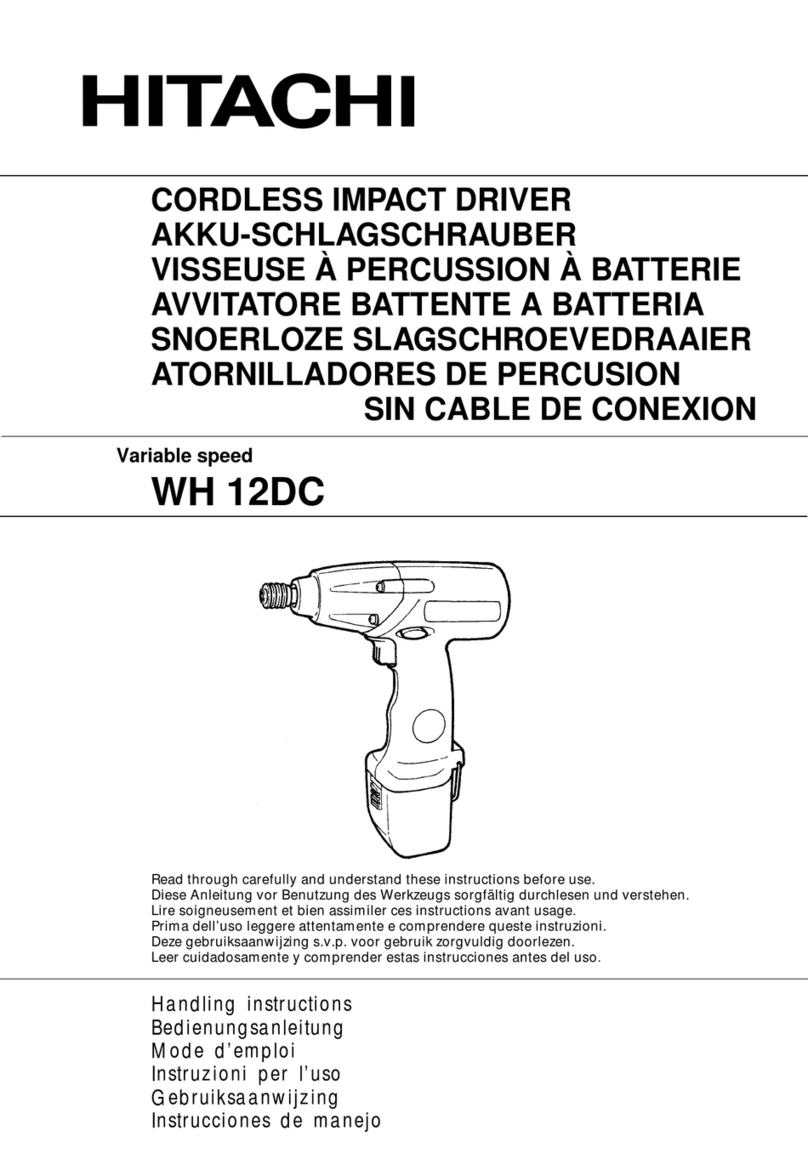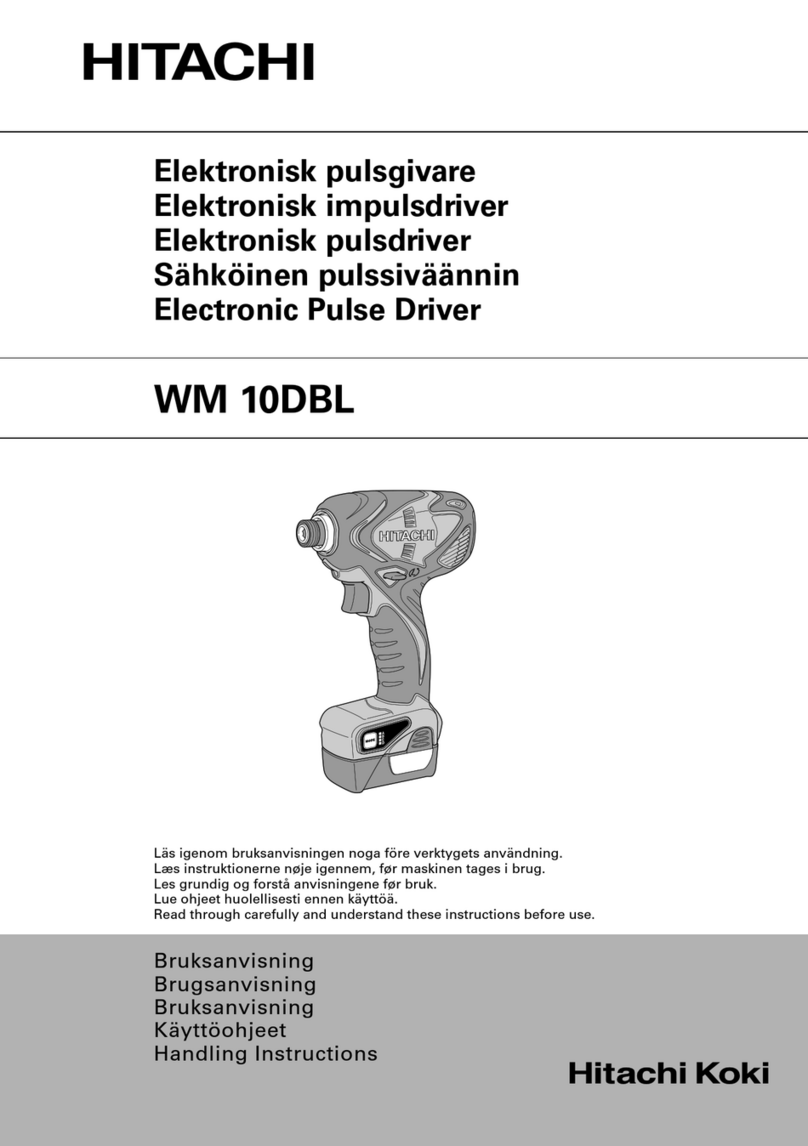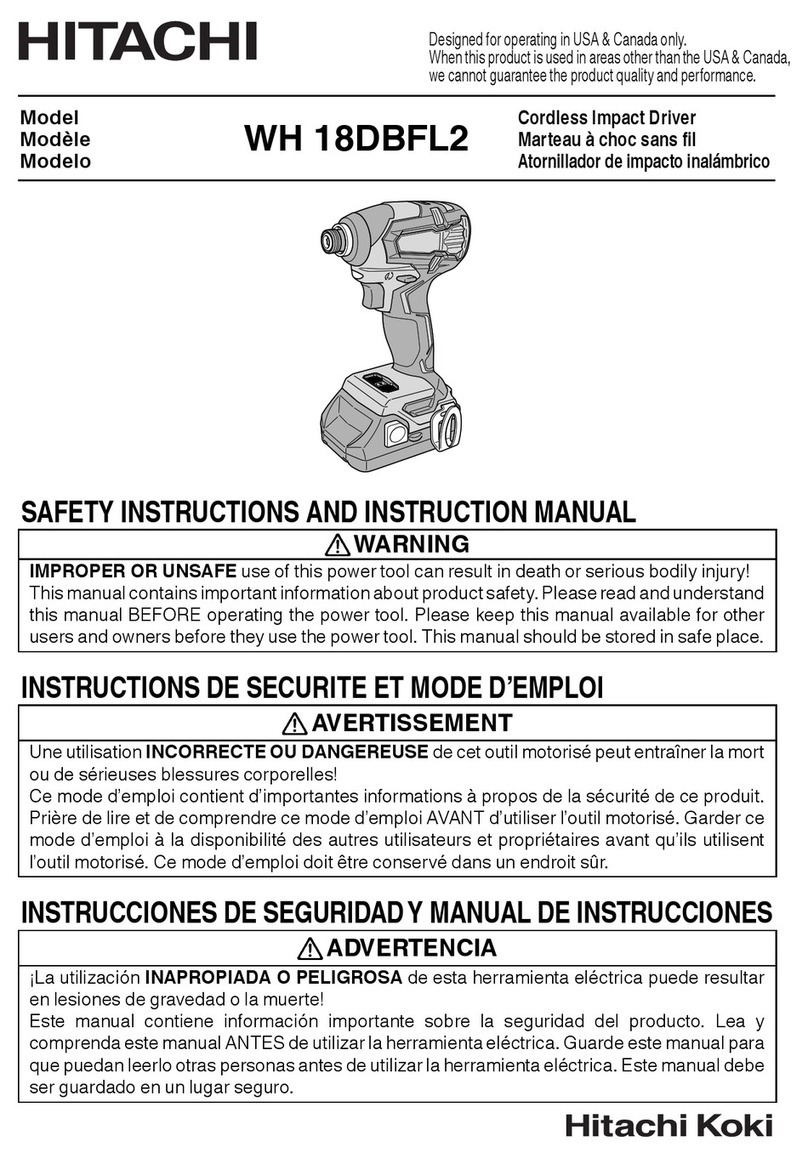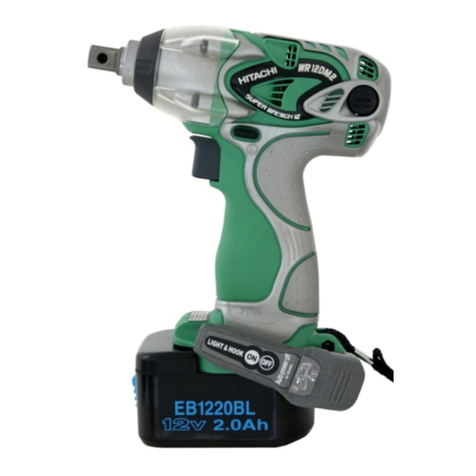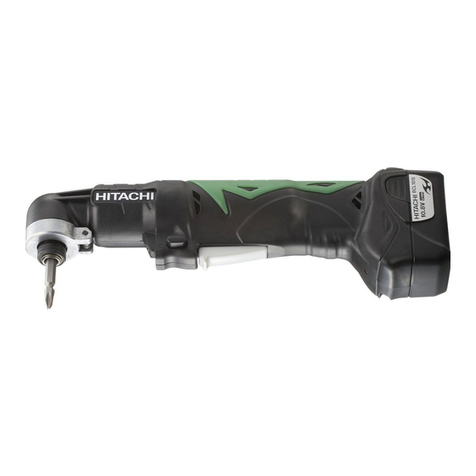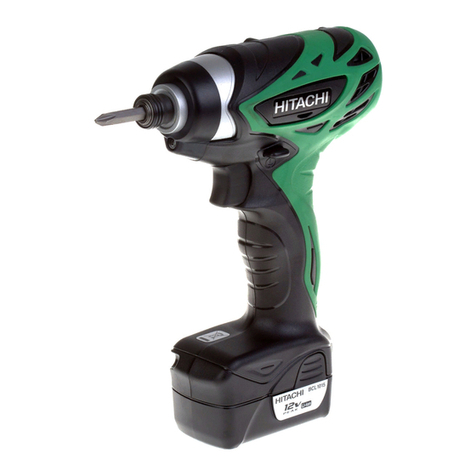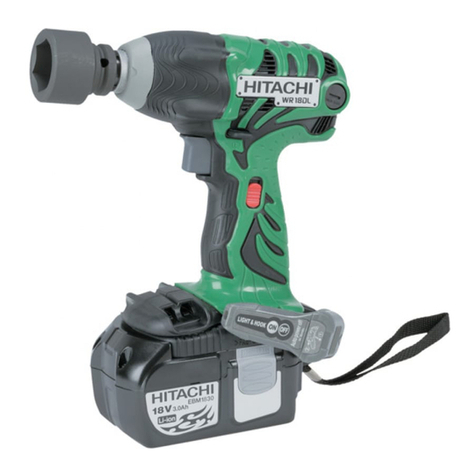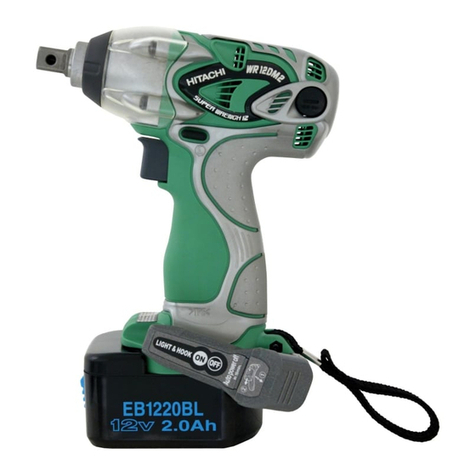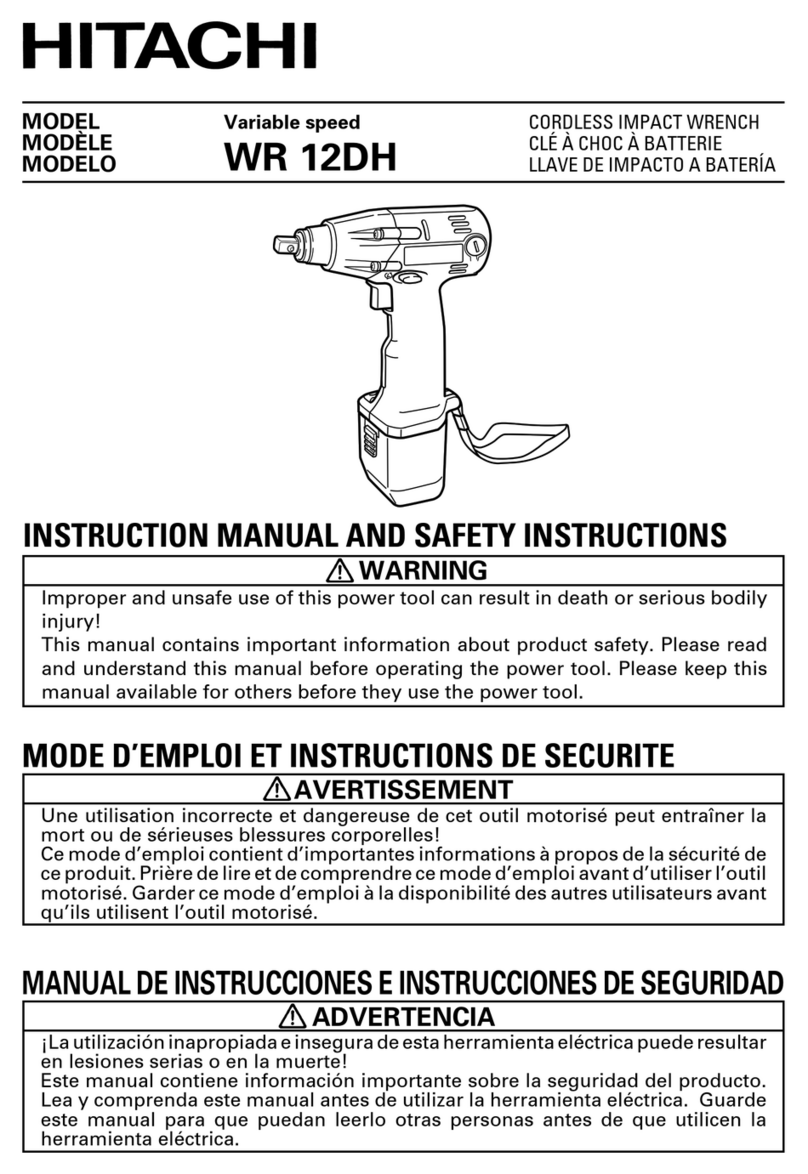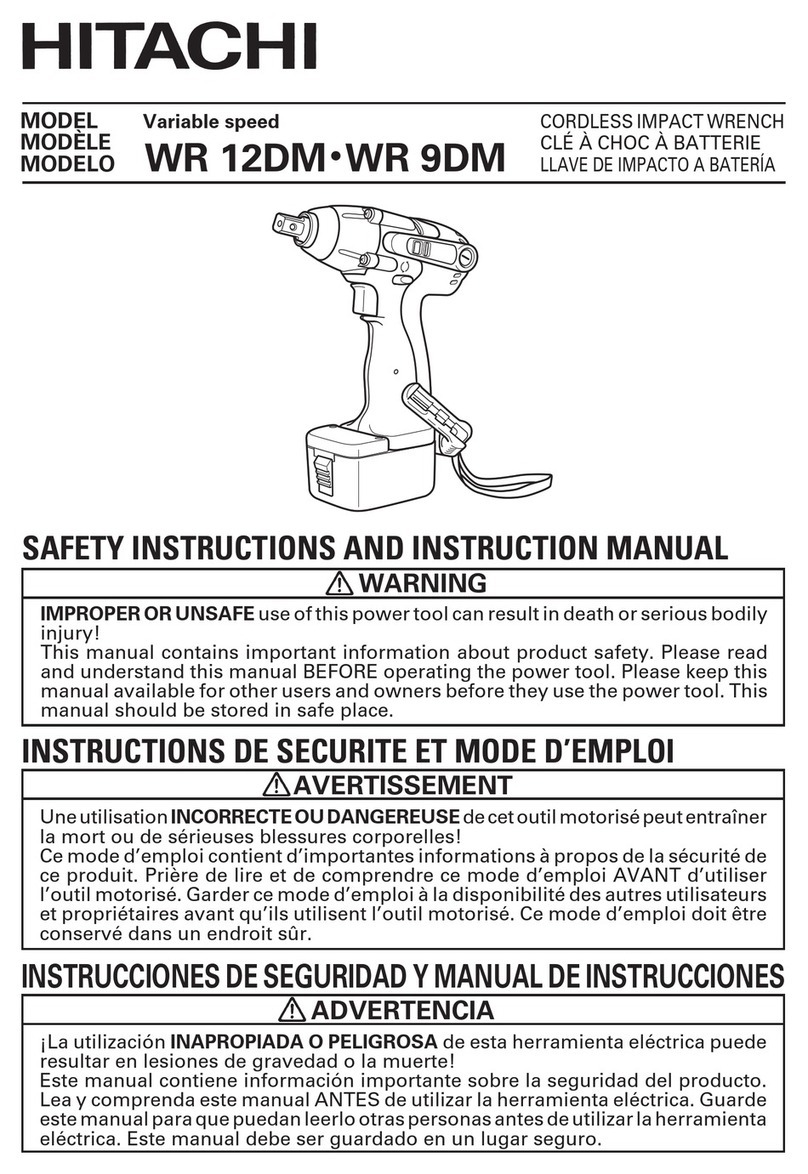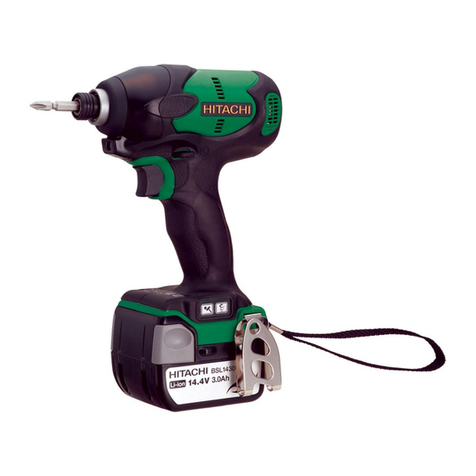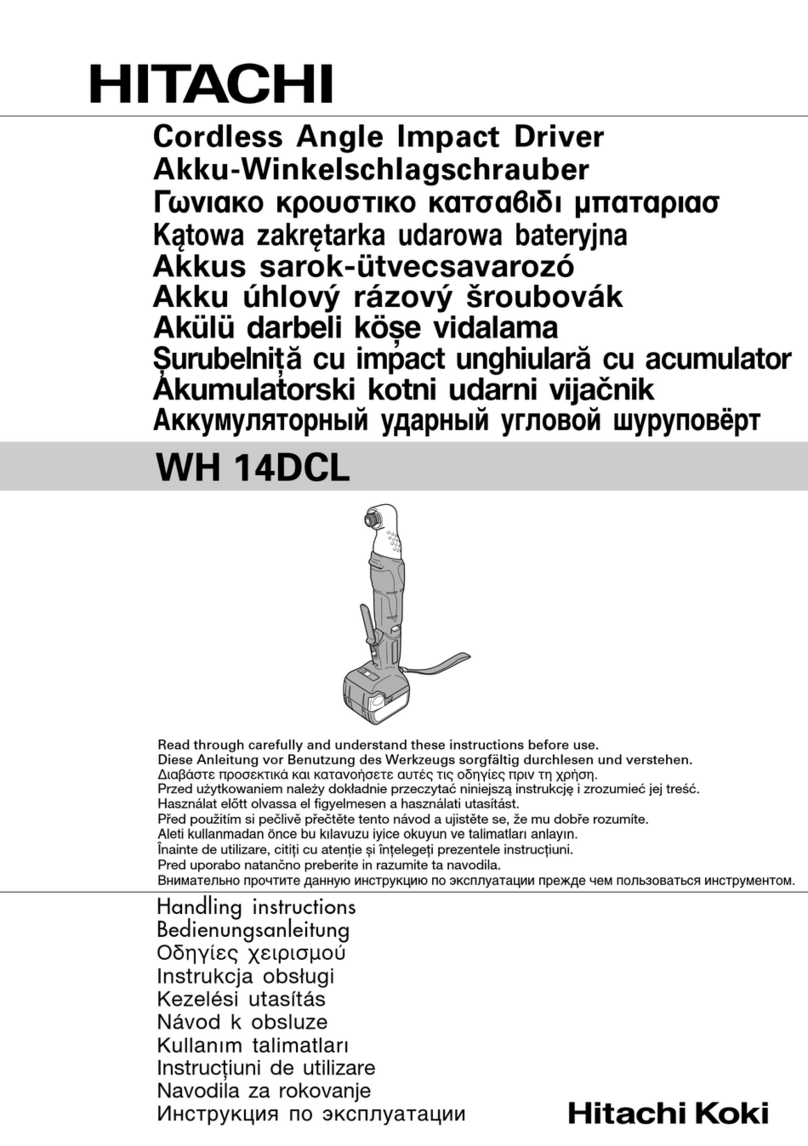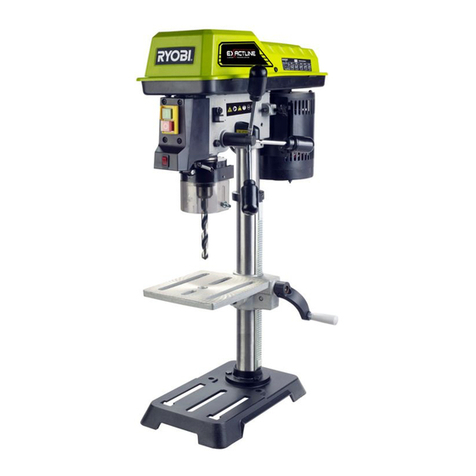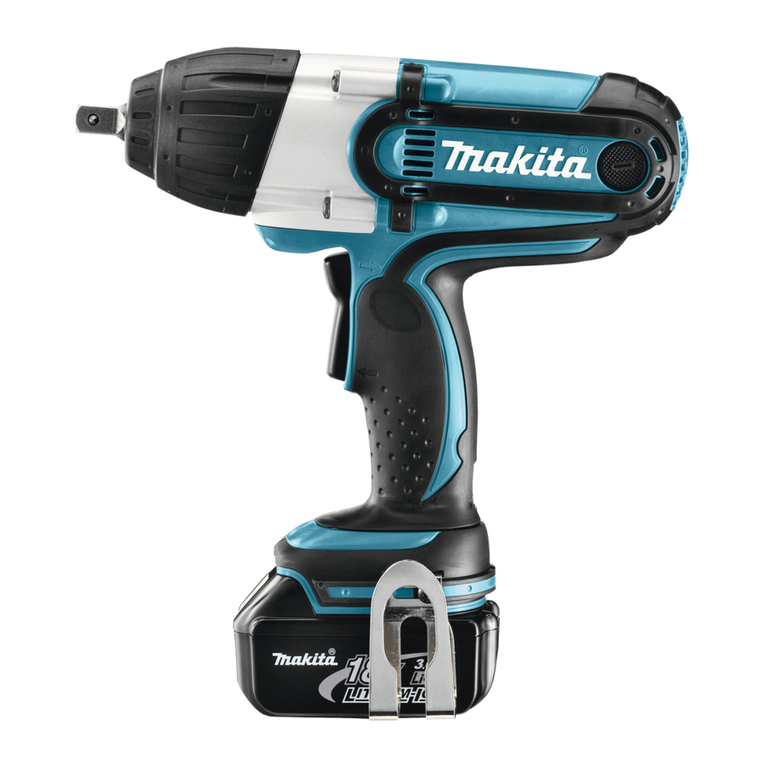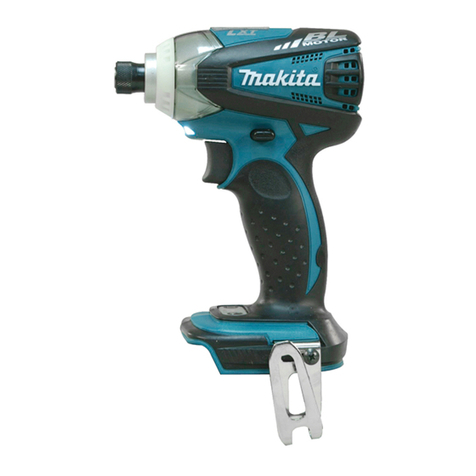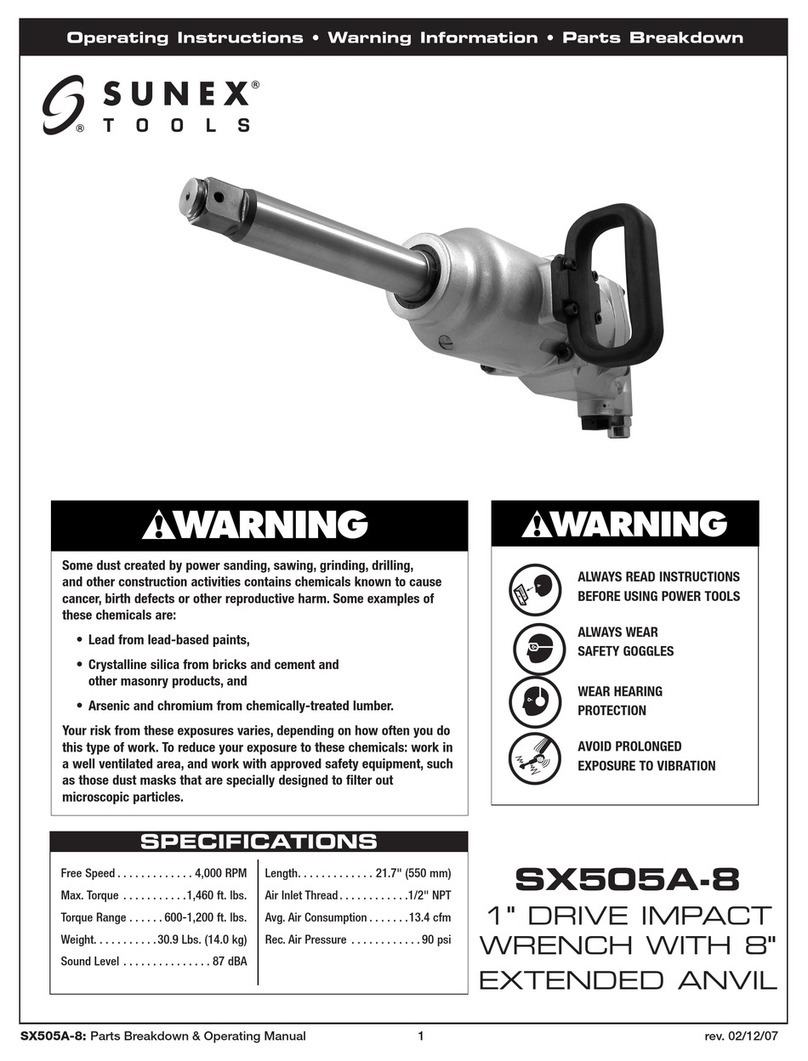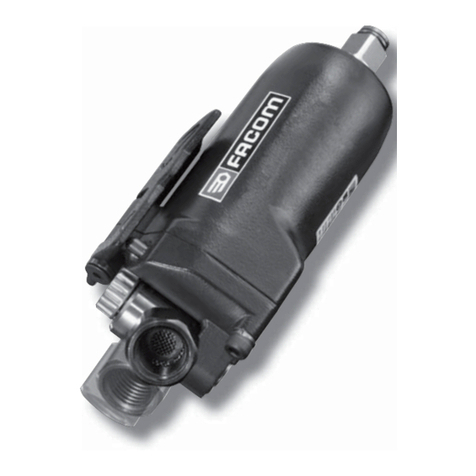
10
4. Work at atightening torque suitable for the bolt
under impact
The optimum tightening torque for nuts or bolts differs
with material and size of the nuts or bolts. An excessively
large tightening torque for asmall bolt may stretch
or break the bolt. The tightening torque increases
in proportion to the operation time. Use the correct
operating time for the bolt.
5. Confirm the tightening torque
The following factors contribute to areduction of the
tightening torque. So confi rm the actual tightening torque
needed by screwing up some bolts before the job with
ahand torque wrench. Factors affecting the tightening
torque are as follows.
(1) Voltage
When the discharge margin is reached, voltage
decreases and tightening torque is lowered.
(2) Operating time
The tightening torque increases when the operating time
increases. But the tightening torque does not increase
above acertain value even if the tool is driven for along
time.
(3) Diameter of bolt
The tightening torque differs with the diameter of the bolt.
Generally alarger diameter bolt requires larger tightening
torque.
(4) Tightening conditions
The tightening torque differs according to the torque ratio;
class, and length of bolts even when bolts with the same
size threads are used. The tightening torque also differs
according to the condition of the surface of workpiece
through which the bolts are to be tightened. When the
bolt and nut turn together, torque is greatly reduced.
MAINTENANCE AND INSPECTION
1. Inspecting the driver bit
Using abroken bit or one with aworn out tip is dangerous
because the bit can slip. Replace it.
2. Inspecting the mounting screws
Regularly inspect all mounting screws and ensure that
they are properly tightened. Should any of the screws be
loose, retighten them immediately. Failure to do so may
result in serious hazard.
3. Maintenance of the motor
The motor unit winding is the very “heart” of the
power tool.
Exercise due care to ensure the winding does not
become damaged and/or wet with oil or water.
4. Cleaning of the outside
When the impact driver is stained, wipe with asoft dry
cloth or acloth moistened with soapy water. Do not use
chloric solvents, gasoline or paint thinner, as they melt
plastics.
5. Storage
Store the impact driver in aplace in which the temperature
is less than 40°C, and out of reach of children.
6. Service parts list
CAUTION
Repair, modifi cation and inspection of Hitachi Power
Tools must be carried out by aHitachi Authorized Service
Center.
This Parts List will be helpful if presented with the tool to
the Hitachi Authorized Service Center when requesting
repair or other maintenance.
In the operation and maintenance of power tools, the
safety regulations and standards prescribed in each
country must be observed.
7. Tightening and loosening screws
Install the bit that matches the screw, line up the bit in the
grooves of the head of the screw, then tighten it.
Push the impact driver just enough to keep the bit fi tting
the head of the screw.
CAUTION
Applying the impact driver for too long tightens the screw
too much and can break it.
Tightening ascrew with the impact driver at an angle to
that screw can damage the head of the screw and the
proper force will not be transmitted to the screw. Tighten
with this impact driver lined up straight with the screw.
8. Tightening and loosening bolts
Ahex. socket matching the bolt or nut must fi rst be
selected. Then mount the socket on the anvil, and grip
the nut to be tightened with the hex. socket. Holding the
wrench in line with the bolt, press the power switch to
impact the nut for several seconds.
If the nut is only loosely fi tted to the bolt, the bolt may turn
with the nut, therefore mistaking proper tightening. In this
case, stop impact on the nut and hold the bolt head with a
wrench before restarting impact, or manually tighten the
bolt and nut to prevent them slipping.
9. Using the hook
The hook is used to hang up the power tool to your waist
belt while working.
CAUTION
○When using the hook, hang up the power tool fi rmly not to
drop accidentally.
If the power tool is dropped, it may lead to an accident.
○When carrying the power tool with hooked to your waist
belt, do not fi tany bit to the tip of power tool. If the sharp
bit such as drill is fi tted to the power tool when carrying it
with hooked to your waist belt, you will be injured.
○Install securely the hook. Unless the hook is securely
installed, it may cause an injury while using.
(1) Removing the hook.
Remove the screws fi xing the hook with Philips screw
driver. (Fig. 10)
(2) Replacing the hook and tightening the screws.
Install securely the hook in the groove of power tool and
tighten the screws to fi xthe hook fi rmly. (Fig. 11)
OPERATIONAL CAUTIONS
1. Resting the unit after continuous work
After use for continuous bolt-tightening work, rest the
unit for 15 minutes or so when replacing the battery. The
temperature of the motor, switch, etc., will rise if the work
is started again immediately after battery replacement,
eventually resulting in burnout.
NOTE
Do not touch the metal parts, as it gets very hot during
continuous work.
2. Cautions on use of the speed control switch
This switch has abuilt-in, electronic circuit which
steplessly varies the rotation speed. Consequently,
when the switch trigger is pulled only slightly (low speed
rotation) and the motor is stopped while continuously
driving in screws, the components of the electronic circuit
parts may overheat and be damaged.
3. Use atightening time suitable for the screw
The appropriate torque for ascrew differs according to
the material and size of the screw, and the material being
screwed etc., so please use atightening time suitable for
the screw. In particular, if along tightening time is used in
the case of screws smaller than M8, there is adanger of
the screw breaking, so please confi rm the tightening time
and the tightening torque beforehand.
000BookWH14DSALKor.indb10000BookWH14DSALKor.indb10 2010/12/2314:22:562010/12/2314:22:56
